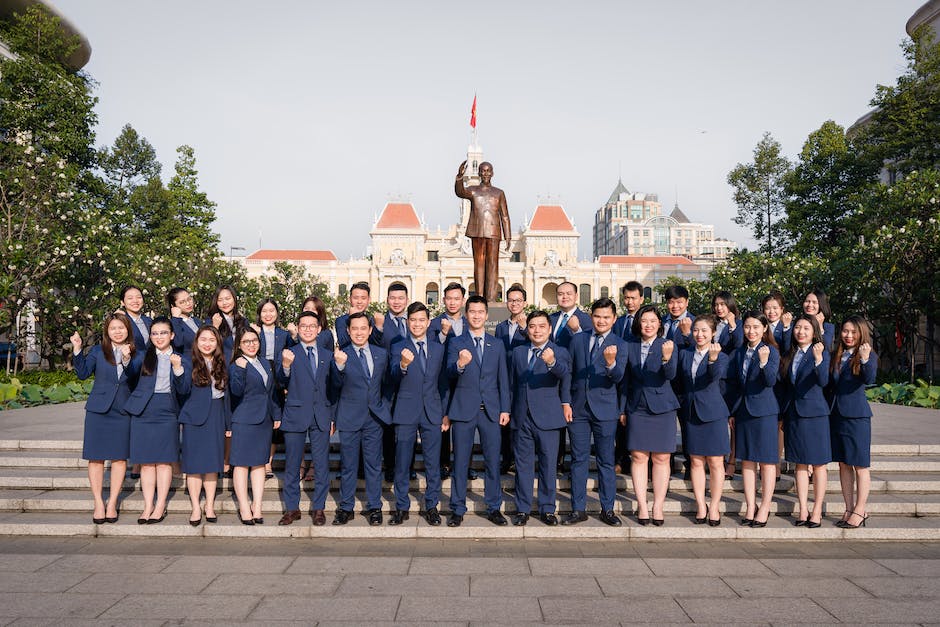Table of Contents
- Introduction
- The Role of Chief Operating Officer (COO) in Corporate Leadership
- Unveiling the Responsibilities of Chief Technology Officer (CTO) in Modern Organizations
- The Influence of Chief Marketing Officer (CMO) in Shaping Corporate Strategies
- The Vital Role of Chief Human Resources Officer (CHRO) in Building a Strong Organizational Culture
- Q&A
- Conclusion
Uncovering the Corporate Suite: An Exploration Beyond CEO and CFO – Revealing the Hidden Powerhouses of Business.
Introduction
Uncovering the Corporate Suite: An Exploration Beyond CEO and CFO
In the corporate world, the positions of CEO (Chief Executive Officer) and CFO (Chief Financial Officer) are widely recognized and often considered the most influential roles within a company. However, there are numerous other key positions within the corporate suite that play crucial roles in shaping the direction and success of an organization. This exploration aims to shed light on these lesser-known roles and their significance in the corporate landscape. By delving beyond the CEO and CFO, we can gain a deeper understanding of the complex dynamics and diverse skill sets required to effectively lead and manage a modern corporation.
The Role of Chief Operating Officer (COO) in Corporate Leadership

Uncovering the Corporate Suite: An Exploration Beyond CEO and CFO
The Role of Chief Operating Officer (COO) in Corporate Leadership
In the world of corporate leadership, the roles of the CEO and CFO are widely recognized and understood. However, there is another key position that often goes unnoticed – the Chief Operating Officer (COO). The COO plays a crucial role in the success of a company, yet their responsibilities and contributions are often overlooked. In this article, we will delve into the role of the COO in corporate leadership and shed light on their importance.
The COO is the second-highest-ranking executive in a company, reporting directly to the CEO. Their primary responsibility is to oversee the day-to-day operations of the organization. This includes managing the company’s internal processes, ensuring operational efficiency, and implementing strategies to drive growth. The COO acts as a bridge between the CEO and the rest of the organization, translating the CEO’s vision into actionable plans and ensuring their execution.
One of the key areas where the COO plays a vital role is in strategic planning. While the CEO sets the overall direction for the company, it is the COO who translates that vision into concrete strategies and initiatives. The COO works closely with other members of the executive team to develop and implement these strategies, aligning them with the company’s goals and objectives. They also monitor the progress of these initiatives and make adjustments as necessary to ensure their success.
Another important aspect of the COO’s role is in managing the company’s operations. This includes overseeing various departments such as production, supply chain, and human resources. The COO ensures that these departments are functioning efficiently and effectively, identifying areas for improvement and implementing changes to optimize performance. They also play a crucial role in managing the company’s resources, including budgeting and cost control.
In addition to their operational responsibilities, the COO also plays a key role in driving innovation within the organization. They are responsible for fostering a culture of innovation and continuous improvement, encouraging employees to think outside the box and come up with new ideas. The COO works closely with the CEO and other executives to identify opportunities for innovation and develop strategies to capitalize on them. They also collaborate with external partners, such as suppliers and customers, to foster innovation and drive growth.
The COO’s role in corporate leadership is not limited to internal operations. They also play a crucial role in external relations, representing the company to stakeholders such as investors, customers, and the media. The COO often participates in investor meetings, presenting the company’s financial performance and growth prospects. They also engage with customers to understand their needs and ensure that the company is delivering value. Additionally, the COO may be called upon to address the media and provide updates on the company’s operations and strategy.
In conclusion, the role of the COO in corporate leadership is often overlooked, but their contributions are invaluable. From strategic planning to operational management, the COO plays a crucial role in driving the success of a company. They bridge the gap between the CEO’s vision and its execution, ensuring that the company’s operations are efficient and aligned with its goals. The COO also fosters a culture of innovation and continuous improvement, driving growth and success. So, the next time you think about corporate leadership, remember to look beyond the CEO and CFO and uncover the important role of the COO.
Unveiling the Responsibilities of Chief Technology Officer (CTO) in Modern Organizations
Uncovering the Corporate Suite: An Exploration Beyond CEO and CFO
In today’s fast-paced and technology-driven world, the role of the Chief Technology Officer (CTO) has become increasingly important in modern organizations. While the CEO and CFO are often the most well-known and visible members of the corporate suite, the CTO plays a crucial role in shaping the technological landscape of a company.
The responsibilities of a CTO go far beyond simply managing the IT department. They are responsible for developing and implementing the overall technology strategy of the organization, aligning it with the company’s goals and objectives. This requires a deep understanding of both the business and technology landscapes, as well as the ability to anticipate future trends and developments.
One of the key responsibilities of a CTO is to identify and evaluate new technologies that can enhance the company’s operations and drive innovation. This involves staying up-to-date with the latest advancements in technology, attending conferences and industry events, and building relationships with technology vendors. By keeping a finger on the pulse of the tech world, the CTO can ensure that the company remains at the forefront of technological advancements.
Another important aspect of the CTO’s role is to oversee the development and implementation of technology projects. This includes managing a team of IT professionals, setting project goals and timelines, and ensuring that projects are delivered on time and within budget. The CTO must also collaborate with other departments within the organization to understand their technology needs and develop solutions that meet those needs.
In addition to managing technology projects, the CTO is also responsible for ensuring the security and integrity of the company’s technology infrastructure. With cyber threats becoming increasingly sophisticated, it is crucial for organizations to have robust security measures in place. The CTO must work closely with the IT team to implement security protocols, conduct regular audits, and stay informed about emerging threats.
Furthermore, the CTO plays a vital role in fostering a culture of innovation within the organization. They must encourage and support employees to think creatively and explore new ideas. This can involve organizing hackathons or innovation challenges, providing resources and training, and creating an environment where experimentation and risk-taking are encouraged.
The CTO is also responsible for managing the company’s technology budget. This involves allocating resources to different technology initiatives, prioritizing projects based on their potential impact, and ensuring that the company gets the best return on its technology investments. By effectively managing the technology budget, the CTO can help the company achieve its strategic objectives while maximizing its resources.
In conclusion, the role of the Chief Technology Officer (CTO) in modern organizations goes far beyond managing the IT department. They are responsible for developing and implementing the overall technology strategy, identifying and evaluating new technologies, overseeing technology projects, ensuring the security of the technology infrastructure, fostering a culture of innovation, and managing the technology budget. The CTO plays a crucial role in shaping the technological landscape of a company and driving its success in today’s fast-paced and technology-driven world.
The Influence of Chief Marketing Officer (CMO) in Shaping Corporate Strategies
Uncovering the Corporate Suite: An Exploration Beyond CEO and CFO
The Influence of Chief Marketing Officer (CMO) in Shaping Corporate Strategies
In the ever-evolving landscape of corporate leadership, the roles and responsibilities of executives have expanded beyond the traditional realms of the CEO and CFO. One such role that has gained significant prominence in recent years is that of the Chief Marketing Officer (CMO). The CMO, often regarded as the voice of the customer within an organization, plays a crucial role in shaping corporate strategies and driving business growth.
The CMO’s influence on corporate strategies stems from their deep understanding of the market and the customers. Unlike other C-suite executives who primarily focus on internal operations, the CMO is responsible for understanding the needs, preferences, and behaviors of the target audience. This customer-centric approach allows the CMO to provide valuable insights that shape the overall direction of the company.
One of the key areas where the CMO’s influence is evident is in brand positioning and messaging. The CMO is responsible for developing a compelling brand story that resonates with the target audience. By understanding the market dynamics and consumer trends, the CMO can craft a brand narrative that differentiates the company from its competitors. This strategic positioning not only helps attract new customers but also strengthens the loyalty of existing ones.
Furthermore, the CMO’s influence extends to product development and innovation. By closely monitoring market trends and consumer preferences, the CMO can identify gaps in the market and opportunities for new product offerings. This insight allows the CMO to collaborate with other departments, such as research and development, to create innovative solutions that meet the evolving needs of customers. By aligning product development with market demand, the CMO plays a pivotal role in driving revenue growth and maintaining a competitive edge.
In addition to brand positioning and product development, the CMO’s influence is also evident in marketing and communication strategies. With the rise of digital platforms and social media, effective marketing has become more critical than ever. The CMO, with their expertise in understanding consumer behavior, can develop targeted marketing campaigns that reach the right audience at the right time. By leveraging data analytics and market research, the CMO can optimize marketing efforts, ensuring maximum return on investment.
Moreover, the CMO’s influence goes beyond external communication and extends to internal alignment. By effectively communicating the company’s vision and values, the CMO can inspire and motivate employees to deliver exceptional customer experiences. This alignment between the internal culture and external brand image is crucial for building a strong brand reputation and fostering customer loyalty.
In conclusion, the role of the Chief Marketing Officer (CMO) has evolved significantly in recent years, with their influence extending beyond traditional marketing functions. The CMO’s deep understanding of the market and customers allows them to shape corporate strategies in areas such as brand positioning, product development, marketing, and internal alignment. As businesses strive to stay competitive in a rapidly changing landscape, the CMO’s role will continue to be instrumental in driving growth and ensuring long-term success.
The Vital Role of Chief Human Resources Officer (CHRO) in Building a Strong Organizational Culture
Uncovering the Corporate Suite: An Exploration Beyond CEO and CFO
The Vital Role of Chief Human Resources Officer (CHRO) in Building a Strong Organizational Culture
In the corporate world, the roles of the CEO and CFO are widely recognized and understood. They are the faces of the company, responsible for its financial success and overall strategic direction. However, there is another key player in the corporate suite whose importance is often overlooked – the Chief Human Resources Officer (CHRO).
The CHRO is the executive responsible for managing the organization’s human capital. They play a vital role in building a strong organizational culture, which is crucial for long-term success. While the CEO and CFO focus on the bottom line, the CHRO focuses on the people who drive that bottom line.
One of the primary responsibilities of the CHRO is talent acquisition and management. They are responsible for attracting and retaining top talent, ensuring that the organization has the right people in the right positions. This involves developing effective recruitment strategies, conducting interviews, and making hiring decisions. Additionally, the CHRO oversees performance management, ensuring that employees are evaluated fairly and provided with opportunities for growth and development.
Another critical aspect of the CHRO’s role is employee engagement. They are responsible for creating a positive work environment where employees feel valued and motivated. This involves implementing employee recognition programs, fostering open communication, and promoting work-life balance. By prioritizing employee engagement, the CHRO helps to increase productivity and reduce turnover, ultimately contributing to the organization’s success.
Furthermore, the CHRO plays a crucial role in shaping the organizational culture. They are responsible for defining and promoting the company’s values, ensuring that they are embedded in every aspect of the organization. This involves developing and implementing policies and procedures that align with the company’s values and goals. The CHRO also plays a key role in fostering diversity and inclusion within the organization, creating an environment where all employees feel welcome and respected.
In addition to their internal responsibilities, the CHRO also plays a critical role in managing external relationships. They are often the face of the organization when it comes to dealing with labor unions, government agencies, and other external stakeholders. The CHRO must navigate complex labor laws and regulations, ensuring that the organization remains compliant while also advocating for the best interests of the employees.
To be successful in their role, the CHRO must possess a unique set of skills and qualities. They must have a deep understanding of human behavior and psychology, as well as strong leadership and communication skills. They must be able to navigate complex organizational dynamics and build relationships with employees at all levels of the organization. Additionally, the CHRO must stay up-to-date with the latest trends and best practices in human resources, constantly evolving their strategies to meet the changing needs of the organization.
In conclusion, while the CEO and CFO may be the faces of the company, the CHRO plays a vital role in building a strong organizational culture. They are responsible for talent acquisition and management, employee engagement, shaping the organizational culture, and managing external relationships. The CHRO’s unique set of skills and qualities are essential for creating a positive work environment and driving long-term success. So, the next time you uncover the corporate suite, remember to look beyond the CEO and CFO and acknowledge the vital role of the CHRO.
Q&A
1. What is “Uncovering the Corporate Suite: An Exploration Beyond CEO and CFO” about?
“Uncovering the Corporate Suite: An Exploration Beyond CEO and CFO” is a book or study that delves into roles and positions within a corporation beyond the traditional CEO (Chief Executive Officer) and CFO (Chief Financial Officer).
2. What is the purpose of “Uncovering the Corporate Suite: An Exploration Beyond CEO and CFO”?
The purpose of “Uncovering the Corporate Suite: An Exploration Beyond CEO and CFO” is to shed light on the various roles and positions within a corporate hierarchy that are often overlooked or less understood.
3. Who is the author of “Uncovering the Corporate Suite: An Exploration Beyond CEO and CFO”?
The author of “Uncovering the Corporate Suite: An Exploration Beyond CEO and CFO” is not specified in the question.
4. What can readers expect to learn from “Uncovering the Corporate Suite: An Exploration Beyond CEO and CFO”?
Readers can expect to gain insights into the diverse range of roles and responsibilities within a corporate structure, going beyond the commonly known CEO and CFO positions.
Conclusion
In conclusion, “Uncovering the Corporate Suite: An Exploration Beyond CEO and CFO” is a valuable exploration that goes beyond the traditional roles of CEO and CFO in understanding the dynamics of corporate leadership. By delving into other key positions within the corporate suite, this exploration provides insights into the diverse responsibilities and contributions of individuals in these roles. It highlights the importance of recognizing and appreciating the multifaceted nature of corporate leadership, ultimately contributing to a more comprehensive understanding of organizational success.




